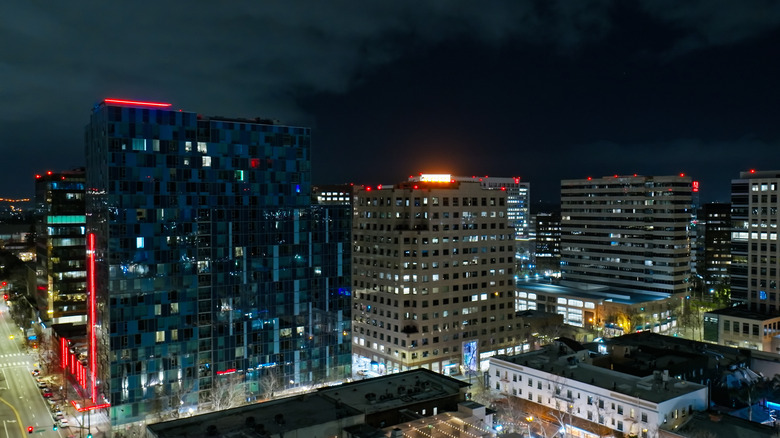The Average Income Of Lawyers Is Highest In These Cities
Nationwide, the median 2024 salary for attorneys, according to the U.S. Bureau of Labor Statistics, was $151,160. Pay varies, though, by location, with U.S. News & World Report listing the metropolitan areas with the highest salaries as San Jose, California; Bridgeport, Connecticut; Boulder, Colorado; San Francisco, California; and Washington, District of Columbia. Using the job site Glassdoor, LLC as the basis of salary information in August 2025, somewhat different rankings of these five areas exist.
San Jose attorneys (located in the heart of Silicon Valley, the country's technology haven) earn a range of $203,000 to $322,000 with a median pay of $253,000, more than $100,000 higher than the national average. The second highest place on the list, Bridgeport, has a salary range of $140,000 to $261,000 with a median of $186,000. Even though that location is in Connecticut, it's grouped into the greater New York metropolitan area, helping to explain the higher salaries. Boulder, Colorado, comes with a salary range that's actually slightly higher than Bridgeport: $150,000 to $279,000 with a median pay of $199,000. Glassdoor then showed a much higher salary in San Francisco with a range of $213,000 to $342,000 and a median amount of $267,000. Finally, Glassdoor data showed that Washington, D.C. attorneys earn between $150,000 and $280,000 annually with a median of $200,000.
Factors involved in attorney pay
All other issues being equal, as the list of high-paying locales demonstrates, attorneys in large cities earn more than ones in rural spots. That said, higher pay may be offered to offset higher costs of living, something that attorneys need to factor in before moving to a locale with higher salaries. Other issues to consider before moving would be the demand for attorneys in the region (oversaturation can exist) and the overall state of the area's economy. Pay structure offered at a particular firm matters, too. Attorneys can get paid a base salary with bonus payouts, receive performance-based compensation, and so forth. Benefits also matter and, if this is important to a particular attorney, so is the flexibility built in for a work-life balance.
Plus, pay can vary by the specialty of law being practiced. According to The Colleges of Law, the five specialties coming with the most lucrative salaries are patent attorneys, intellectual property attorneys, trial lawyers, tax attorneys, and corporate lawyers. No matter the specifics, though, this profession saw the overall biggest two-year jump in pay over the past century, according to a report by the American Bar Association. From 2021 through 2023, salaries jumped by an astonishing 19.2%.
Where lawyers fall in the economic class system
What economic class these average salaries would fall into varies significantly by city and state. Are these salaries signs of being middle class or upper middle? Using Pew Research definitions of middle class and U.S. Census data, SmartAsset listed a big city middle class income range of $49,478 to $71,359 for 2025. Looking at San Jose, though, the city where attorneys earn the most money ($203,000 through $322,000), the range for middle class living is from $90,810 to $272,458 with a median pay of $136,229. So, although many San Jose attorneys fall into the middle-class definition, some make an upper-class income. San Jose is the city with the second highest income amount required to fall into the category of middle class, only behind Arlington, Virginia at $93,470 through $280,438 and a median pay of $140,219; Arlington is a city where more than half of the people earn more than $100,000.
Contrast that to what defined a middle-class income in Detroit, the city with the 100th highest requirements, and the amounts only range from $25,384 to $76,160. The median pay there is $38,080. In that city, Glassdoor reported, attorney pay can range from $162,000 to $260,000 annually with a median pay of $203,000. This gives attorneys in Detroit big buying power in the Motor City, demonstrating how what a person makes is intricately tied to the cost of living where they live when determining their economic class.


